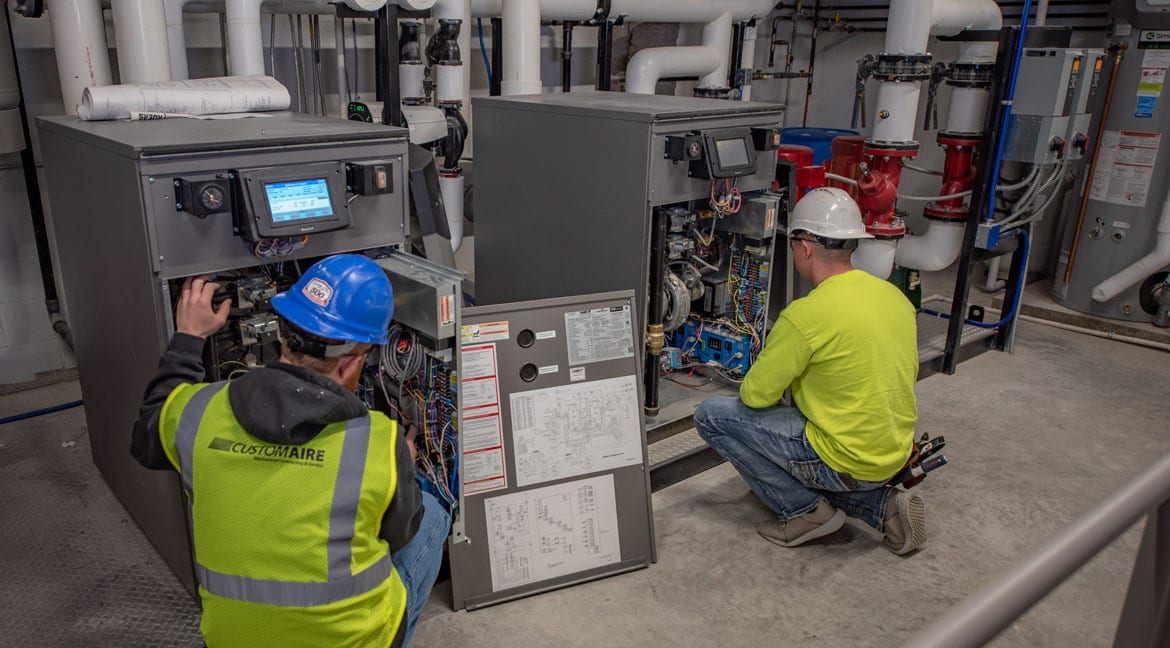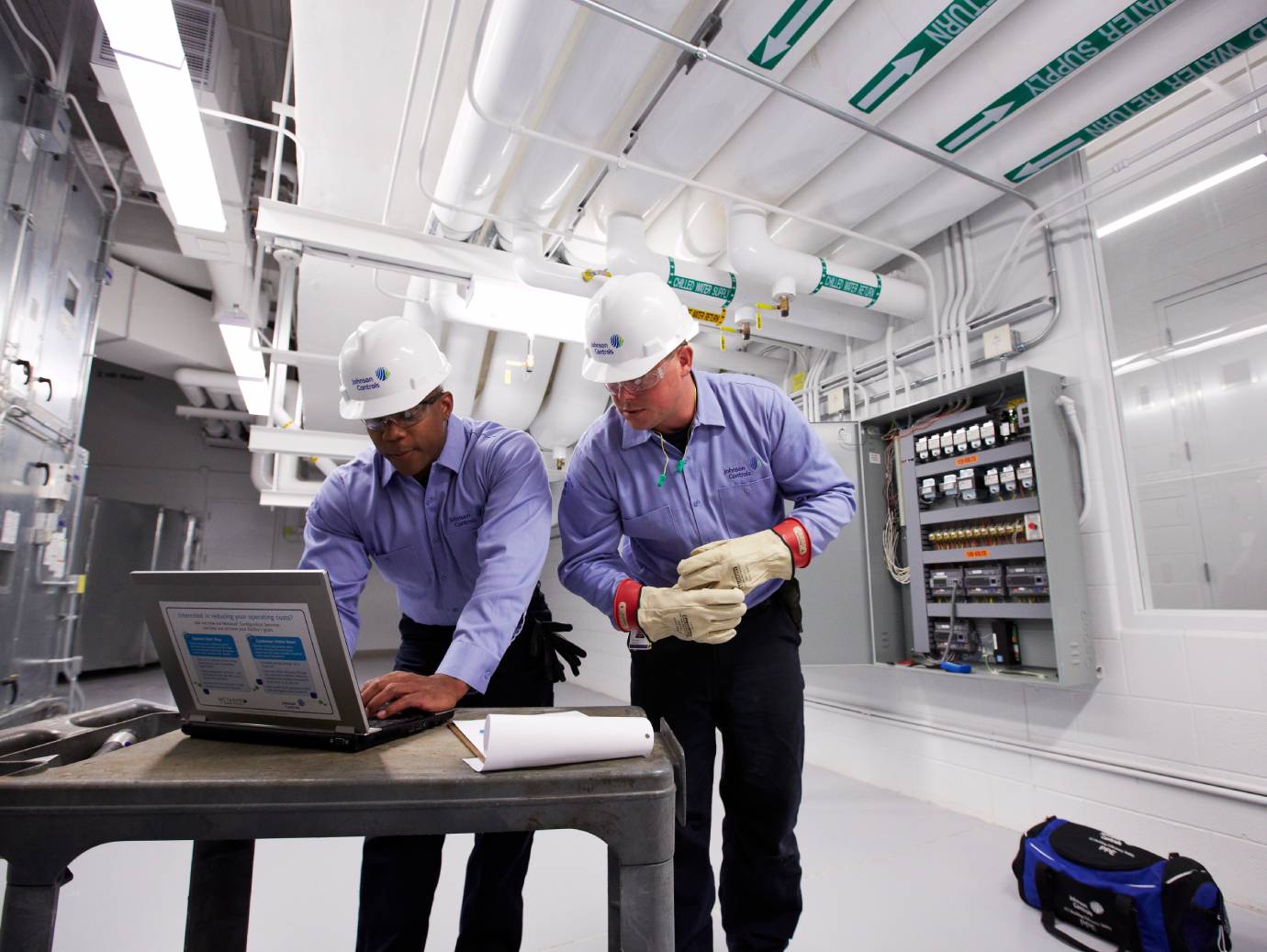Prevent Costly Repairs with Scheduled heat pump service
Prevent Costly Repairs with Scheduled heat pump service
Blog Article
Just How a Warmth Pump and Heater Job Together to Maximize Your Home's Heating Performance
Understanding how a heatpump and heater interact is crucial for property owners looking for reliable heating remedies. Each system has its strengths, giving a well balanced technique to home comfort. The heatpump masters moderate temperatures, while the heating system delivers fast heat throughout extreme cold. This synergy not only minimizes energy prices but also enhances the life expectancy of both appliances. What factors influence this partnership, and exactly how can homeowners maximize their benefits?
Understanding Warmth Pumps: Exactly How They Function
Numerous individuals might be strange with their internal workings, warm pumps play a crucial function in modern-day home heating systems. These tools run by transferring warm from one place to an additional, making use of the principles of thermodynamics. In colder months, a heat pump extracts heat from the outside air, ground, or water, and transfers it inside your home to heat the space. On the other hand, during warmer months, it can turn around the process, working as an ac system by eliminating heat from inside to the outside.Heat pumps contain an evaporator, condenser, compressor, and development valve. The cooling agent within the system absorbs warmth as it evaporates at low temperature levels and stress. The compressor then increases the stress and temperature of the cooling agent, permitting it to release warm as it condenses. This efficient procedure can substantially decrease power intake contrasted to traditional home heating approaches, making warm pumps a sustainable option for environment control in homes.
The Role of Furnaces in Home Heating
Heating systems play a crucial function in home heating by supplying a dependable source of warmth during the colder months. They run by producing warm with combustion or electric resistance, dispersing it throughout the home by means of air ducts or glowing systems. The efficiency of a heater is frequently gauged by its Yearly Gas Application Performance (AFUE) rating, which suggests exactly how properly the system transforms fuel right into heat.Furnaces can utilize different energy sources, consisting of gas, electricity, propane, or oil, enabling home owners to select one of the most appropriate choice for their demands. Unlike heatpump, which may have a hard time in severe chilly, heaters preserve constant performance, guaranteeing that interior temperatures stay comfortable no matter of exterior conditions. In addition, modern-day heaters often come geared up with sophisticated innovation, such as clever thermostats and variable-speed blowers, enhancing their efficiency and responsiveness. This adaptability makes heaters a critical part in comprehensive home heating approaches.

Advantages of Utilizing Both Equipments With Each Other
Incorporating the toughness of both furnaces and warmth pumps can result in a more effective and effective home heating solution. Using both systems enables house owners to capitalize on the heatpump's power effectiveness throughout milder temperature levels while depending on the heater for even more severe cold conditions. This dual method can considerably reduce power prices, as heatpump consume less electricity than typical home heating approaches when temperatures are moderate.Additionally, utilizing both systems together can enhance comfort degrees in the home. Heat pumps can give constant, even heating, while furnaces can rapidly increase ambient temperature levels when needed. Furthermore, the combination of both systems can extend the life expectancy of equipment by decreasing damage on each unit, as they share the work. Eventually, homeowners can enjoy a well balanced, economical home heating option that changes flawlessly to differing climate condition, ensuring a cozy and welcoming home throughout the cold weather.
Just How Warm Pumps and Furnaces Complement Each Other
When property owners incorporate heat pumps and furnaces, they develop a complementary heating unit that maximizes performance and convenience. Warm pumps operate by moving warmth from the outdoors air or ground, making them very efficient in modest climates. They stand out during milder temperature levels, supplying economical home heating. Conversely, heaters generate warmth through combustion or electrical resistance, delivering solid, prompt warmth during extreme cold conditions.The mix of these 2 systems allows for dynamic modifications based upon temperature fluctuations. During warmer months or milder wintertime days, the warmth pump can take the lead, saving power and lowering prices. As temperatures decrease, the furnace can effortlessly involve, ensuring consistent warmth throughout the home. This synergy not just maximizes power use yet likewise boosts the lifespan of both systems, as each system runs within its perfect efficiency variety. Together, they develop a balanced atmosphere that adjusts to varying environment needs.
Enhancing Effectiveness: Tips for Homeowners
Property owners can boost their home heating effectiveness through numerous useful techniques. Establishing a routine upkeep schedule, integrating smart thermostat modern technology, and executing reliable insulation and sealing options are key steps. These steps not just enhance comfort yet also lower energy expenses.
Regular Upkeep Arrange
To guarantee maximum home heating performance, developing a routine upkeep schedule is vital for any type of home. House owners must focus on routine evaluations of both warmth pumps and heating systems to identify peak efficiency. This includes changing air filters every one to 3 months, as clogged filters can significantly minimize effectiveness. Additionally, scheduling professional maintenance at the very least yearly enables specialists to determine and address potential problems prior to they intensify. House owners must also cleanse the warm company website pump's outside system to avoid debris accumulation that can hinder air flow. By adhering to a regular upkeep schedule, house owners not just improve their heating unit' performance but also extend their life expectancy, bring about greater comfort and lowered energy prices throughout the cooler months.
Smart Thermostat Integration
Integrating a clever thermostat right into a home heating unit can substantially improve power efficiency, especially as it permits accurate control over temperature settings. These devices can find out the property owner's routine and preferences, immediately adjusting the temperature level to optimize comfort while minimizing power use. They can reduce home heating during times when the home is unoccupied, lowering unnecessary usage. Numerous clever thermostats likewise give real-time energy use data, allowing home owners to make educated choices about their home heating behaviors. In addition, remote access using smartphone applications enables individuals to change settings from anywhere, making certain the home is warm upon return. On the whole, smart thermostat integration not just boosts convenience however significantly contributes to energy cost savings and effectiveness.
Insulation and Sealing Solutions
Smart thermostats play an important role in energy effectiveness, yet their effectiveness can be substantially improved by correct insulation and securing options. Home owners must focus on shielding floors, attic rooms, and walls to decrease warm loss. Premium insulation products, such as spray foam or fiberglass, can considerably enhance thermal resistance. Additionally, sealing voids around windows, air ducts, and doors avoids cold air seepage and warm escape. Weatherstripping and caulking are effective approaches for resolving these leaks - heat pump service. Normal inspections for air leakages, together with the usage of blower door examinations, can aid determine issue locations. By purchasing insulation and securing, house owners can maximize the efficiency of their heater, inevitably resulting in decreased energy intake and reduced energy bills
Common Myths Regarding Warm Pumps and Furnaces
What misunderstandings border heatpump and heating systems? Numerous individuals incorrectly think that heatpump are inefficient in cooler climates. In fact, modern warm pumps are designed to operate effectively also in low temperature levels, offering reputable heating throughout winter. An additional usual misconception is that heating systems are constantly more effective than warm pumps. Nevertheless, this depends upon the particular energy resources and effectiveness rankings of the systems in question. Some might additionally assume that using both systems at the same time is unnecessary, however in truth, this mix can optimize home heating performance, particularly during extreme weather. Additionally, people often think that heatpump require consistent maintenance, when actually, they have comparable upkeep requires to conventional heater. By debunking these myths, property owners can make even more informed choices regarding their heating choices, eventually bring about improved comfort and energy performance in their homes.
Maintenance Factors To Consider for Combined Systems

Often Asked Questions
Can Heat Pumps Work Successfully in Very Cold Climates?
Heatpump can battle in very cold environments due to decreased effectiveness and warmth removal constraints. However, advancements in modern technology have resulted in versions created for far better performance in such problems, improving their practicality in rough environments.
Exactly How Lengthy Do Warm Pumps and Furnaces Generally Last?
Warmth pumps usually last 15 to 20 years, while heating systems have weblink a lifespan of 15 to thirty years. Regular maintenance can extend their longevity, ensuring effective procedure and lowering the need for early replacements.

What Is the Ordinary Expense of Installing Both Systems?
The average expense of installing both a heat pump and a heater commonly ranges in between $5,000 to $10,000 - heat pump replacement ooltewah tn. Aspects affecting this price include system dimension, installment intricacy, and regional labor rates
Exist Tax Obligation Incentives for Utilizing Energy-Efficient Home Heating Equipments?
Numerous homeowners ask about tax incentives for energy-efficient home heating systems. Various government and state programs commonly supply credit scores or discounts, urging the adoption of sustainable technologies to minimize power intake and promote ecological duty.
How Do I Pick the Right Size Heatpump and Furnace?
Picking the best size heatpump and heating system entails calculating the home's square footage, thinking about insulation top quality, and evaluating regional climate. Consulting an expert can ensure optimal system performance and energy effectiveness based on specific needs. heat pump service. Recognizing just how a heat pump and furnace job with each other is essential for home owners seeking effective home heating options. In cooler months, a warm pump removes warm from the outside air, ground, or water, and transfers it inside your home to heat the living area. When property owners integrate warmth pumps and heating systems, they develop a corresponding heating system that takes full advantage of effectiveness and comfort. Warmth pumps run by transferring warmth from the outside air or ground, making them extremely reliable in modest environments. Warmth pumps can struggle in exceptionally cold climates due to reduced performance and heat extraction constraints
Report this page